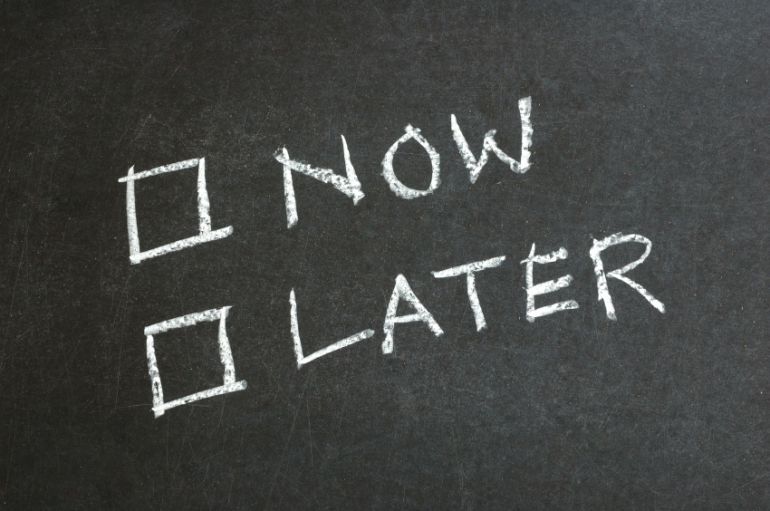Procrastinating, or practicing good timing?

You have a decision to make. But you just aren’t sure about it. So you put it off. Sometimes that’s a wise move, because the timing isn’t right. In my book The 21 Irrefutable Laws of Leadership, I teach the Law of Timing, which says, “When to lead is as important as what to do and where to go.” So I believe that timing plays a critical role in many of the decisions we make. Waiting to act can be a wise decision. We might need more information, or perhaps the people who will be affected need to be prepared.
But when you wait, are you always practicing good timing? Or do you put things off unnecessarily? In those cases, maybe you’re procrastinating. How can you tell if a tendency to wait is procrastination?
Good timing becomes procrastination…
- When missing deadlines becomes a regular occurrence.
- When you often ask, “When is the latest that I can do this?” instead of “When is the soonest that I can tackle it?”
- When you frequently come across old documents and to-do lists that you haven’t missed in weeks or months.
- When items on your to-do list continually roll over to the next day, week, or month.
- When items get crossed off your to-do list not because they’ve been completed, but because they’re too out of date to be done.
American entrepreneur Victor Kiam said, “Procrastination is opportunity’s natural assassin.” And it’s true that putting off a decision long enough can often make the decision irrelevant. The situation changes and the opportunity disappears.
Here are some tests you can apply to an opportunity to help you get over the hurdle of procrastination.
The Murphy’s Test
What could possibly go wrong?
Could I handle the consequences?
Albert Einstein said, “In the middle of difficulty lies opportunity.” Murphy’s Law says that things will go wrong. Can you handle the worst-case scenario? Is the opportunity worth the price? If yes, then it may be time to move.
The Preparation Test
Am I (or are we) prepared to do this?
Just remember that preparation is not necessarily knowing all the answers or achieving consensus. General Colin Powell once said that if zero represents no data and 100 represents all of the data needed to make a decision, he usually waits until he’s at about 60, then he uses gut instincts, intuition, and personal experience to make the choice. Preparation is getting to at least 60.
The Options Test
Do I increase or decrease my options by waiting?
With good timing, a delay can actually increase options, either by providing more information, or allowing new opportunities. However, if the passage of time will eliminate a valuable option, it might be time to move.
The Deadline Test
When is the best time to make the right decision?
Connie Gersick of the Anderson Graduate School of Management at UCLA did a study on the impact of deadlines on decision-making. Her data revealed that precisely midway between the start of a project and the deadline is when people get seriously down to work. Without a set deadline, that stage can’t be reached. By setting a firm deadline, you move the decision-making process toward a conclusion.
Procrastination may relieve short-term pressure. But it often impedes long-term progress. If you tend to procrastinate, make a conscious effort to apply the above questions to your decisions. And when the time is right, take action. As Jim Stovall said, “Don’t wait for all the lights to be green before you leave the house.”
More Articles

Do I Believe The Best In Others?

BIG ANNOUNCEMENT!









Be the first to comment on "Procrastinating, or practicing good timing?"